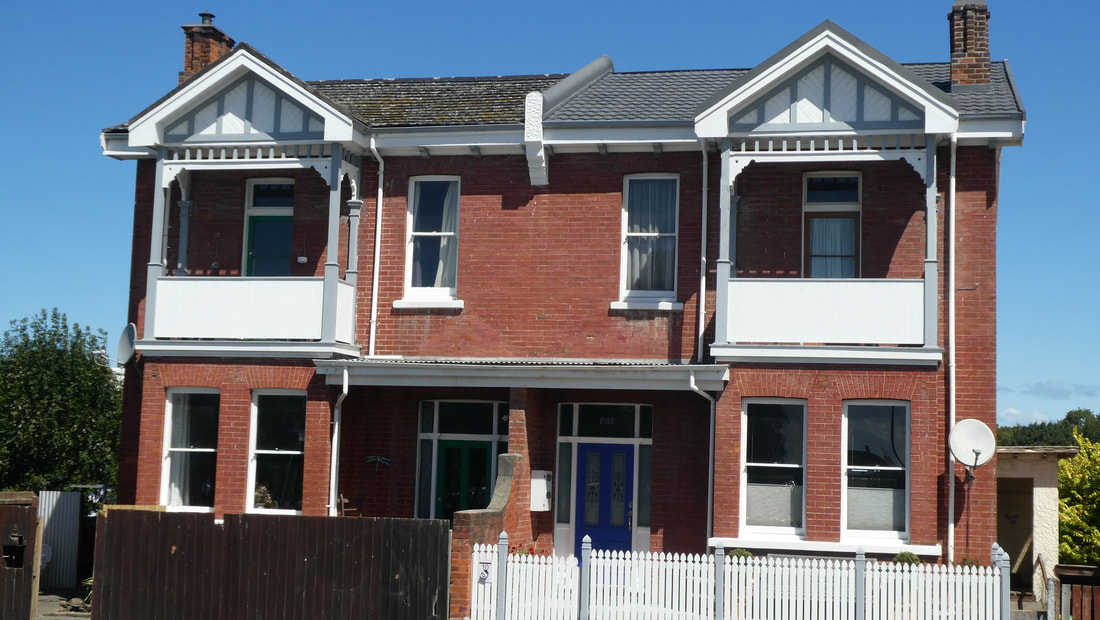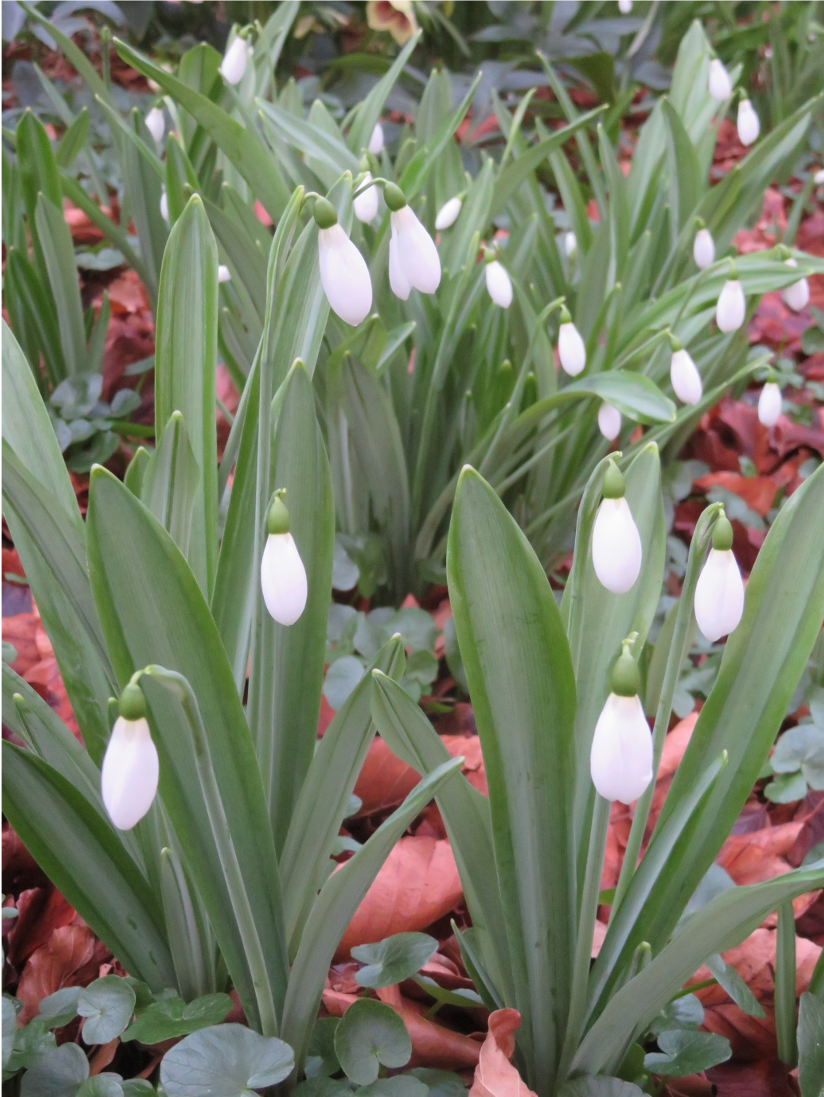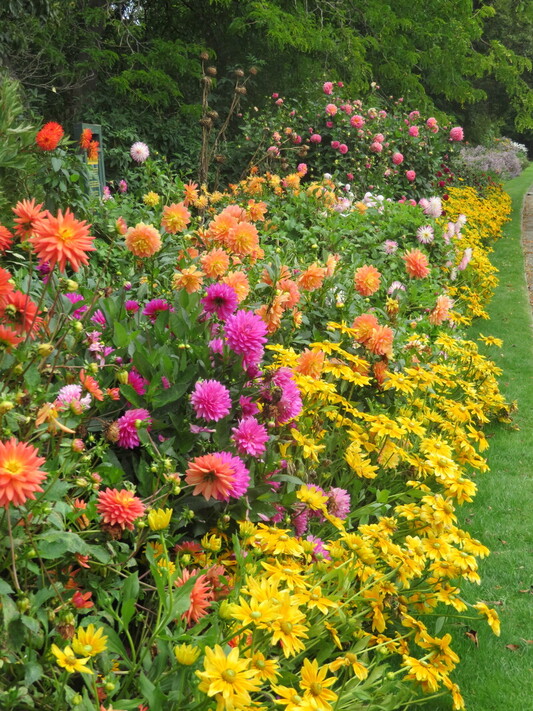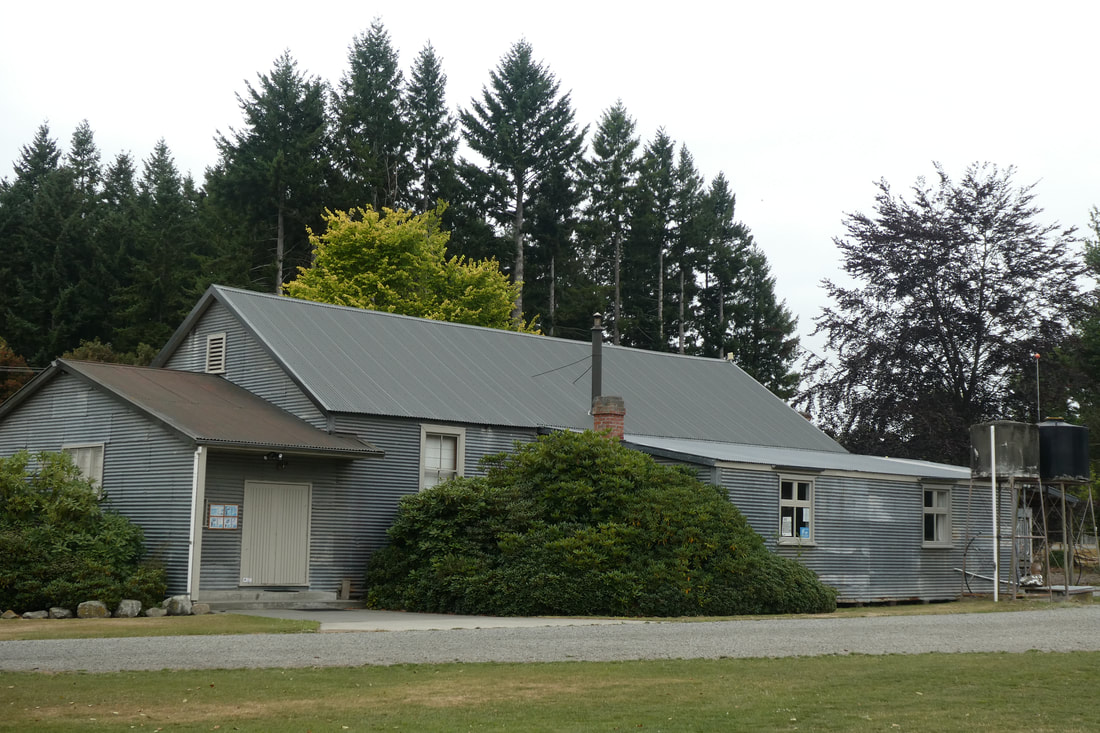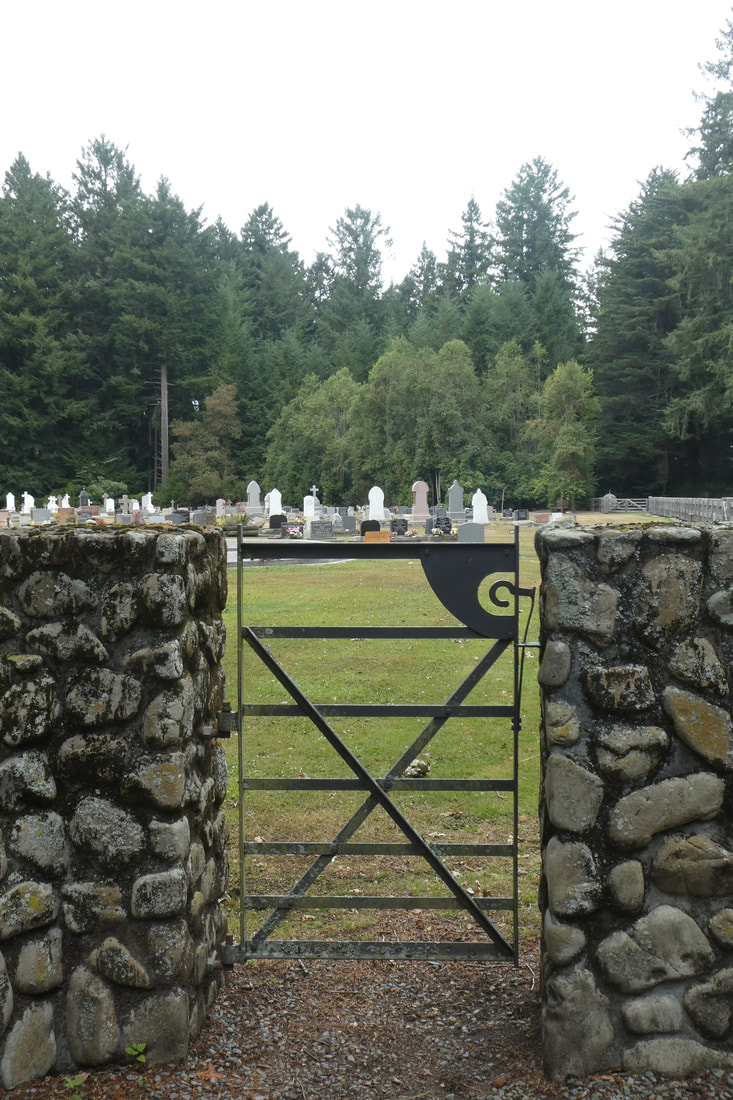|
Travelling around the older areas of Timaru you can still find some interesting old homes.
Our fashions and tastes were heavily influenced by English design and in some cities you can see the use of semi-detached dwellings. In England the use of Terrace Housing, rows of 3 or more dwellings with shared walls on either side was common. Terrace Housing was not popular in New Zealand. They were seen as undesirable as they symbolised the congestion and sometimes, squalor, of city living in England that many of our settlers had left behind. Here we had plenty of space available and the preference was for single houses built on their own quarter acre sections A semi-detached dwelling is a single family duplex dwelling house that shares one common wall with the next house. In New Zealand these houses started to appear from 1880 as land supplies tightened. The first semis were symmetrically designed and two-storey to maximise living space but still allow each family to have their own section. This is an example of an early version of a town house. This semi-detached house sits on Catherine Street which lies within the boundary of Government town which, along with Rhodes town, formed our earliest subdivisions. The dividing wall is clearly visible emerging up through the roofline. It was built around 1900 and can be described as Edwardian in style. The characteristics of this building were typical of the time in Timaru. You can see the box sash windows, solid red brick construction and rectangular plan. It features individual entrances on each side towards the rear. Its roof is not as steeply pitched as a Victorian house would be. It has relatively few embellishments and decorative features with only a few decorative panes around the door, simple block eve brackets. A feature is the gabled porch above each of the rectangular bay windows below. I imagine it would have been a very smart address to live at, towering above the surrounding cottages and enjoying views over the bustling busy settlement. The town green belt lay across the main road with views of the mountains in the distance. Looking over a thriving neighbourhood with horse and carts rolling by and our first motor vehicles appearing on the scene. A town house indeed. Karen Rolleston
0 Comments
Just an aside really, not a building or local landmark mentioned in this article……just a friendly little reminder from the garden that the mood out there is lightening a bit.
I do love a bit of winter, the skeleton trees, the icy puddles, the rain on the roof but It’s been cold right? Lovely to be snuggled up safe and warm inside preferably with people you like or a good book to read, or all rugged up and walking the dogs…. perfect. Lots of snow on our horizons, the mountains surrounding us are looking fabulously smothered in the white stuff…. however that’s not the only type of ‘snow’ making an appearance. In many of our gardens, big and small, young and old, those hardy little late winter warriors, Snowdrops, are making their way out into the world. A reminder that winter doesn’t last forever, the sun will shine again and Spring in just around the corner. Early settlers imported them to decorate the land surrounding their homes, and they must have been freely available, as an article in the Otago Witness, August 1888, insists that "there is not a garden that should be without these delicate-looking flowers, either in town or country". Flowering in late winter, a sign spring was on its way must have given the colonists relief that they'd made it through another New Zealand winter. Snowdrops come under the family name Galanthus. They are a Spring bulb and very easy to grow. Plant your snowdrop bulbs under deciduous trees, they will receive sufficient sunlight, since they bloom and begin storing nutrients before the leaves come out on trees. Just leave them there and they will multiply and naturalise, making them an irresistible addition to the woodland garden. Obviously I am not the only Snowdrop enthusiast around Canterbury. I see the annual SNOWDROP SUNDAY will be held at Terrace Station on Sunday 12th August with visitors welcome between 11am and 3pm. Nice Idea for a Sunday drive. Terrace Station and its 15 hectares of woodland gardens can be found at Hororata. Follow signs from the Hororata roundabout – approx 5kms to site. This year the snowdrops are a couple of weeks ahead of schedule but you will still see plenty as well as winter aconites and banks of hellebores, not forgetting the magnificent trees in their winter splendour. If the day is fine, bring your picnic lunch. Adults - $5.00 per head to the Terrace Station Charitable Trust. Children – no charge Please note that dogs are not permitted. Karen Rolleston When I visited the Timaru Botanic Gardens last year to take photos of the Robbie Burns statue I also took some of the colourful dahlia border that was still blooming profusely well into autumn. As we are settling in for the long lockdown ahead I thought it might be interesting to find out a little of the history about these beautiful and reliable garden performers. They are such a cheerful summer/autumn addition to a home garden, blousy, bold and available in an amazing variety of colours as well as being easy peasy as to grow. Dahlias originated in the mountain regions of Mexico and Guatemala and they still thrive there today. Before the time of the Aztecs not much is known about them but it is recorded that the Aztecs used parts of the dahlia for food and medicine.
In the 1570’s King Phillip ll of Spain sent a botanist, Francisco Hernandez, to Mexico to study the natural resources of the country and he described plants that resembled dahlias at that time. However it wasn’t until 1789 that plant parts were sent from the Botanical Garden at Mexico to the Royal gardens of Madrid in Spain. From there culture and propagation began and 3 new plant forms were grown. The genus was named after a Swedish botanist, Andreas Dahl. Seed and plant parts from the dahlias were sent throughout Europe from the early 1800’s and hybridization work continued. Double forms and colour variations resulted and captured the imagination and passion of plant breeders throughout Europe. Continued propagation and development of the earlier crosses resulted in the first modern dahlia hybrids being created around 1929. These new hybrids were easy to grown and hybridize so they quickly became very popular in European and American home gardens. Throughout the 1800s and 1900s thousands of new forms were developed and all of these new dahlia forms were hybridized from at least two, possibly all three of the original Dahlia species sent from Mexico in 1789. The dahlia we know today has one of the largest variations of form, colour and size of any flower grown and every year there are new varieties being developed and released constantly. It remains the National Flower of Mexico where its beauty, as well as usefulness, was first discovered by the Aztec Indians so long ago. We have our very own local dahlia specialists, Alistair and Joan Davey. Alistair was 13 years old when his great uncle gave him his first dahlia and that gift sparked a lifelong passion for these remarkable flowers. Have a look through his website, www.daveygardens.com and while away an hour or so plotting where you can perhaps squeeze one into your garden after this long winter ends. Keep well and safe, Karen Rolleston Some recent photos on Wuhootimaru’s Face Book page featuring an old cottage on the outskirts of Pleasant point piqued my interest and I decided it needed following up.
James and Ellen Keane were immigrants from County Kerry in Ireland. They arrived in New Zealand on the 1st July 1861 after travelling aboard the “Chrysolite” which departed Gravesend, London in April of the same year. After landing in Lyttleton the Keanes spent 10 years living in Christchurch before they and their 5 children headed to their new home in South Canterbury. This hard working couple managed to get together enough money to buy a piece of farmland and build a home for themselves and their family to live in. The house they built is the substantial cob cottage that still stands on its original site to this day. This one is two storeyed with a large ground floor living room and an upper room or loft where the family all slept. The covered wagon or schooner they travelled south in stood on their property near the cottage well into the 1940’s. Cob cottages were well built and a favourite with our early settlers. Utilising the local soil and clay for the raw materials as well as labour and skills given by other community settlers it meant they were relatively cheap to construct. A feature is their excellent thermal protection that makes them suitable for extremes of climate. In terms of longevity, cob buildings have the potential to remain functional, with regular maintenance, for hundreds of years. This one has been well tended by past and present landowners, sited along Keanes Rd just off the Point highway; it is fenced apart from the surrounding farmland and well protected from stock. The cob has been restored, the tin roof is in good order and it has spouting which all help keep Keane’s Cottage in the great state it remains in today. Cob buildings were once a significant part of New Zealand's early history and census figures from 1845 recorded more than 40 per cent of building stock in the South Island was of earth construction. As times progressed and more building materials became available this percentage declined to the point where there are fewer than 200 earth dwellings in the South Island today. Karen Rolleston Last week’s column was about the Eleanor Howard Tripp Memorial Library that stands on a prominent corner of Woodbury’s main road. I received a copy of a newsletter that I thought was relevant in terms of the ongoing life of such treasured buildings within a community.
This Library was gifted to the community when it was completed in 1936 after Eleanor’s death. It is cared for, funded and staffed by local volunteers and there are many ongoing costs involved in terms of maintenance and insurances. Its existence relies on what can be raised from raffles and, perhaps, donations. As well as working to maintain the library these volunteers do an amazing job in also caring for the section, gardens and the War Memorial that stands in front of the library. Coming up this year, on Saturday the 4th of April, there will be a book fair and boot sale to be held at the Woodbury Hall to help with fundraising. It runs from 9am till 12 noon. This would be an enjoyable outing, as well as supporting a great cause it would be a chance for those interested to have a look around the Hall and Domain, St Thomas’s Church and the Memorial Library at the same time. The history room at the library is open on the first Sunday of each month between the hours of 11am to 2pm and would be an interesting place to while away a couple of hours. The building itself has a solar power unit installed to help reduce lighting costs. As I mentioned in last week’s column, during her lifetime Eleanor began a library for the staff who worked at her home at Orari Gorge Station. Owing to a misinterpretation on my behalf I need to correct a mistake I made in last weeks column, the books from Eleanor’s station library are all catalogued and listed as part of a private family library at her home station. Karen Rolleston Dotted about our rural communities are dozens of tiny libraries and there is a rather beautiful example of one of these charming buildings in the settlement of Woodbury.
This small wooden building was built by the residents of Woodbury in memory of Miss Eleanor Howard Tripp of Orari Gorge Station. It stands behind the war memorial positioned on a corner of the main road and is still in use today. There are two rooms on the site; one is a library room, the other a history room. Eleanor was a great reader and a believer in the value of education for all. She started a library for the staff in one of the out building at her home at Orari Gorge Station. This ran continuously for 100 years and the collection of books, which has been catalogued and listed with the Historic Places Trust, still exists in the Historic buildings that stand at the Station today. It is interesting to note that her sister, Katherine, known as Katie, started the Orari Gorge Station School around the same time. Eleanor was highly respected in the district and took a prominent but unobtrusive part in social welfare and charitable work. She was a long time committee member of St Saviour’s Orphanage and served in this role until the time of her death, after an illness of several months, at 69 years of age. She was also a Sunday School teacher and her pupils aided in the collection of the stones that went into the building of the St Thomas’s Church in Woodbury. This lovely church was built as a memorial to her parents, Charles George Tripp and Ellen Shephard Tripp of whom she was the third daughter. She was also a granddaughter of Bishop Harper. This beautiful memorial library sits quietly in its place, it tells a story of New Zealand’s past history and culture and is well worth a visit. Built out of respect and admiration for the work done by this gentle woman, it remains well cared for by local volunteers. Its hours of operation are listed on the notice board out front. Karen Rolleston St John’s Anglican Church on Wai-iti Rd in Highfield is not an old church but it is a handsome one.
Behind the church we see today stands the original red brick Sunday school building. Over the years this evolved to become the church. Even though it has been replaced it still enjoys a busy life as a church hall. The new one was built in 1949 in a classic style. It was opened in November 1951. The square tower is a notable feature, topped with an iron cross and weather vane, this rises above the battlements and gives the church its English character. Constructed by local builders the concrete and plaster exterior walls have been recently painted in a discreet taupe with white detailing. The repeated crests around the top of the tower have been nicely highlighted and are another appealing feature. They include the St John’s cross, St George’s Anglican cross and the Trinity shield. The slate roof is also beautiful and makes you think the church is older than it is. The interior of the church is traditional, quite simple compared to churches of previous eras. The interior has a comfortable, friendly and practical feel to it. Nice and solid, it is decorated with white walls, blue carpet and tapestry hangings. The ceiling is of dark wood and rises to the rafters high above the congregation. The original pulpit, gifted by the Tonkin family, has been brought across from the old church as was the lovely old Christening font, gifted by the Mothers Union. The stained glass windows are deceptively simple and add plenty of light. At the front of the church you can find another of Gypsy Poulstons wonderful stained glass windows, this one was dedicated in 1976. Her husband Eddie Poulston sculpted the modern crucifix which compliments Gypsy’s window beautifully. The church also has an organ, keyboard to one side with the pipes on the opposite wall and this was made by the South Island Organ Company here in Timaru. Karen Rolleston The establishment of a settlement at Woodbury was well underway by 1880, most of the farmland around the area had been taken up and was being developed. The population of the district was greater than it is today and the needs of the growing community needed to be acted upon.
There is no record of the election of the first Domain Board but minutes show their first meeting was held on March 2nd 1880 at the Woodbury Hotel. At this meeting it was proposed that a generous amount of land be set aside to be used as an education reserve and recreational area for the community. In total some 55 hectares of unfenced treeless tussock land was earmarked for the project. To raise the money required for development much of the land was leased out with some of it planted in trees. Over the years that followed the Board judiciously used the income from rents received to carry out their planned improvements and help with ongoing maintenance. Although this was a slow process, in the long run it has proved a sustainable one and in recent years the Board has had sufficient income from these farm rentals and the sale of matured timber to carry out the necessary work renewing fences, piping a water supply, replanting of trees and the upgrading of its buildings as well as its sports facilities. The charming tin clad Woodbury Hall we see today was built as a Coronation Library Hall in 1911. Trees were felled and the timber cut for use in building the hall with the surplus wood being on sold. The official opening was on December 14th the same year. One of the first major items purchased was a grand piano which lasted till it was replaced with a more robust upright piano in 1963. This rustic country Hall has had been enjoyed by many users and has had many additions approved and instigated by the Board as ongoing improvements over the years. Power and lighting were installed in 1925 and a Ball was held to celebrate the switching on of the electricity. It still remains well used by the local community and is available to be hired out for functions including country weddings and the like. Karen Rolleston. Most of my notes about the history came from the Woodbury Domain and Cemetery boards’ booklet. In the township of Woodbury, just a few kilometres from Geraldine, you will find a beautiful Anglican church nestled into a yard surrounded by some large trees and a lawn. It is enclosed by a handsome stone and boulder wall with charming wooden gates along both road frontages. Some recent pruning suggests there are not as many trees as there once were and this opens up views of the church nicely.
In November, 1877 a public meeting to consider the erection of a church was held and by March 1879, St Thomas's Church was completed and consecrated by the Bishop of Christchurch. Tripp is a familiar name in Woodbury. A well-known pioneer family whose descendants came to New Zealand in 1855, they settled in the area and made their home at Orari Gorge Station. Descendants of the family still live there today. This original part of the church was constructed of wood on concrete foundations and its form reflects the Norman style of architecture commonly used in churches about Devon, England, where the Tripps emigrated from. A chancel and tower were added in 1926 made of local stone and attached to the old wooden building. The large tower was named as a memorial to Charles George and Ellen Shephard Tripp and the Nave, built in 1938, was named for his children, Charles Howard and Eleanor Howard Tripp. It was designed by Cecil Wood and completed by local builders, Herbert Cooling and Oswald Scott of Woodbury. Oak for the carved furniture and for memorial tablets is from the Tripp homestead at Orari Gorge. Building materials feature local stones and boulders, as do many of these local memorial churches. The roof is of purple hued Welsh slate. The church also features seven beautiful stained glass lancet windows. Wonderful destination for a Sunday drive or to attend a service, I understand the church is open to be viewed by passers-by and friendly visitors alike. Karen Rolleston Follow the signs just a few km’s north of Geraldine and you will find the small settlement of Woodbury. Originally named Waihi Bush, the town was first established by Robert Taylor and Frederick Flatman in 1866 to service the saw milling and farming industries that were developing around the area. The village grew rapidly in its early years and was home to a large general store, two butcher’s shops, a shoemaker, a creamery, a blacksmith and a two-storeyed wooden hotel that would later blow down in a gale.
Waihi Bush was renamed Woodbury after the birthplace of Frederick Flatman’s wife, Elizabeth, in Devonshire, England. It is situated in a fertile farming valley which extends from Geraldine back to the foothills. Beautiful plantings of established trees in the area add to its picturesque appeal. There are some lovely cemeteries dotted about the countryside and the Woodbury cemetery is one of them. It adjoins the local Domain where a short walk leads to a relatively new boulder fence and gates that have been placed to mark the original entrance. It is well signposted and can also be accessed from the main road. The cemetery is not attached to any church. It is forest lined, surrounded by large and beautiful collection of evergreen cypress and cedar type trees, a tranquil and calm place to visit with several memorial seats dotted about and sheltered beside the trees. The first burial here was for John Nicholas E. Pearce in November 1889 and the cemetery is still being used today. There are many aged and charming headstones and memorials to ponder on in this well maintained place. I realise not everyone enjoys wandering around country cemeteries but those of you that do would find this one beautiful, a private and peaceful location and the record of local history here fascinating. Karen Rolleston |
View by date Archives
February 2021
Categories |
|
|

